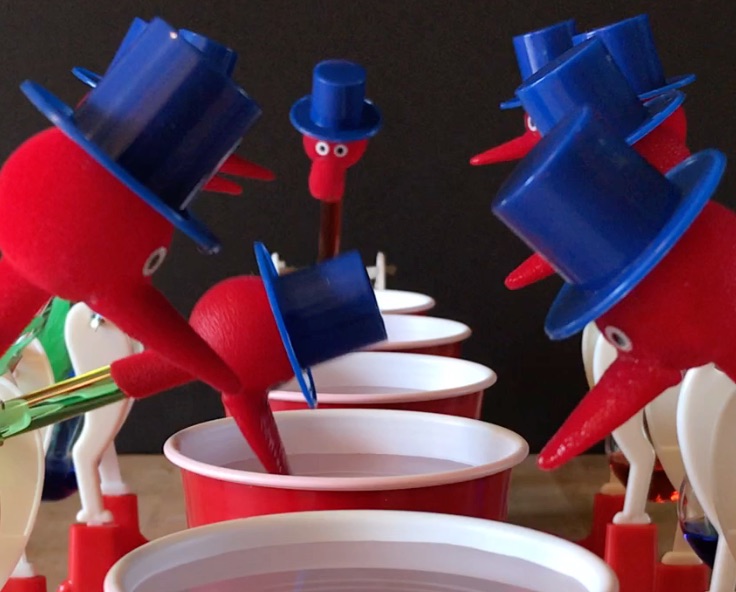Fire Piston
Description: Fire pistons have been used for hundreds of years as a fire starter. Tinder is place in a seal tube and a piston is rapidly pushed into the tube. The air is compressed increasing the pressure and temperature until the ignition point of the tinder is reached. A diesel engine works in a similar fashion. This phenomenon can be used to introduce the particle model of air and temperature as a measure of the kinetic energy of particles.
Web Resource: Fire piston - Wikipedia
Supercooled Water
Description: Supercooling occurs when the temperature of a liquid is lowered below the freezing point without forming a solid. In the case of water it needs a seed crystal or a nucleation site to start forming ice. If the water has been filtered through reverse osmosis or chemical demineralization it can be safely cooled below the freezing point. Simply shaking the bottle forms solid ice.
Web Resource: Supercooling - Wikpedia
Aerogels - World’s Lightest Solids
Description: Aerogels are a group of synthetic materials that are incredibly light and also amazing insulators. They have numerous applications such as insulators in electronics. Aerogels were used as thermal insulators in the Mars Rover and also act to filter space dust. This phenomenon could be used as an application of chemical engineering or as an example of a thermal insulators.
Web Resource: Aerogel - Wikipedia
Reusable Heat Packs
Description: This phenomenon uses a supersaturated solution of sodium acetate. Clicking the metal disc releases a small number of crystals of sodium acetate which act as nucleation sites for the crystallization of the sodium acetate into a hydrated salt. Energy is released from the crystal lattice. The heating pack can be placed in boiling water and the sodium acetate can be dissolved again. This phenomenon shows how bond energy can be released. It also shows the importance of chemical engineering and could lead to a section where students design a device (or application) of their own.
Web Resource: Chemical Heat Pack - Wikipedia, Snappy Heat - Amazon
The Collapsing Train Car
Description: The collapsing train car can be used as an anchoring phenomenon on a unit related to the structure and properties of matter. The macroscopic implosion is caused by a decrease in pressure within the train car and air pressure crushing the car. To fully understand this phenomenon students must understand what is going on at the microscopic level. This phenomenon can be demonstrated at a smaller scale in the lab using an empty soda pop can (containing a small amount of water) that is heated and then inverted in water.
Ice Cube Spikes
Description: Ice cube spikes form when the exterior of the ice cube freezes first and the expanding water from the inside is forced out through a small hole or weak spot in the exterior. The phenomenon can be used to show the reversible change of freezing in elementary or the intermolecular forces between molecules in high school chemistry.
Web Resource: Spikes on Ice Cubes
Brinicles
Description: As ocean water freezes into solid ice the remaining saltwater forms into icy "stalactites" that descend into the ocean. This can be used as a phenomenon in an elementary class to show changes in state. In middle and high school the chemistry can be explored more deeply.
Web Resource: Brinicle - Wikipedia
The Drinking Bird
Description: The drinking bird is a toy heat engine. The source of energy in this phenomenon is a mystery to most students. It is said that Albert Einstein and his wife Elsa were fascinated with this toy when they visited Shanghai in the 1920's.
Web Resources: The Engineering of the Drinking Bird, The Drinking Bird - Wikipedia










